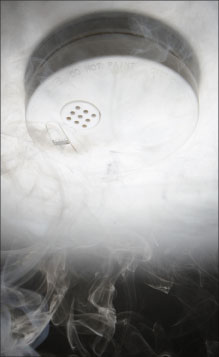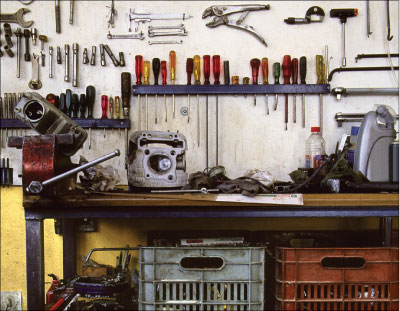“Get your head in the game”
It’s a new year and a great time to get your head in the safety game. The New Year is a great trigger to prompt safety meetings and to create the dialog to understand your successes and failures and to chart the safety course for the New Year. Yes, the New Year can be a trigger for this type of activity as triggers for safety actions are not new as evidenced by the changing of the clocks initiating the replacing of batteries in smoke alarms. It is unfortunate that the New Year has become associated with lost causes; sort of like the resolution to lose those unwanted pounds found over the holidays. Then again, it could be that the New Year just hasn’t met electrical safety yet, so let’s make the introductions and change the previous association to one of success and saving lives.
The 6-Point New Year Safety Checklist
The focus of this effort is to get the organization engaged with electrical safety at the beginning of the year, sparking team energy that will start your year off in the right direction. Your organization is not just the CEO, the safety committee, management or just the employees. Your organization is everyone. Everyone has a role to play. The 6 points highlighted as part of this article are not meant to dig into details and implementation; that is left to your team as everyone has a role to play in these details. How you are or will address each of these items in your organization is the discussion that needs to happen with your team. Your direction/action will not be the same as others. Every organization and their circumstances will be unique. The implementation plan should be written down for years to come. This gets more and more important as the size of the organization increases, as there are more individuals to communicate with and to track.

Photo 1. Smoke alarm check.
I have placed the following points in a specific order as they build on each other. These are high-level thought-provoking drivers, not specific point-by-point items that address details. This list should prompt you and your team to dig deeper in one or more meetings. Because your team should already be doing the right things from a safety perspective, the following should be able to get the entire team moving rather quickly.
Annual Performance Review
This is your report card that shows how well your plan worked last year. Reviewing this data as a team should help identify concerns and issues that need to be addressed. Total hours worked, number of injuries, number of cases with days away from work and other recordable data points are just a few statistics that should be collected over time. Some organizations elect to record “near misses” as a way to identify areas where improvements can be made.
You will also need to get beyond the numbers to identify the areas of concern and to identify improvements that can be made. This is where the near miss data point and background around each event can come in handy. Many organizations may be faced with a record of no accidents, no time off, no deaths and more good results. Some organizations elect to record in the near miss category. Participation and accuracy are important and can be very helpful. That’s why everyone is important in the collection of this data.
Your safety performance data relies on everyone. If events are not reported or are reported incorrectly and inaccurately, your safety performance reports will not be accurate or complete. Then, too, if all employees are completing the forms and submitting corrective action reports correctly and accurately and upper management doesn’t act on the data, the safety machine breaks down. Safety performance reviews should drive action and your budgets must be able to handle the actions necessary. Your data should help you budget accordingly.

Photo 2. A good place to start is right in your own toolbox. Checking your tools for those that need to be replaced or repaired can help ensure a safe New Year. Treat your tools with the respect they deserve and, by all means, use the right tool for the job.
Some organizations look at safety as a profit center. The data collected helps drive this home because every event or non-event costs or saves the organization money. Reducing accidents, down time, loss of work time and other areas of incurred expenses because of accidents goes straight to the bottom line.
Equipment Check
The equipment check should range from the big trucks and lifts that you own and use, down to the screwdrivers and side cutters and everything in between (photo 2). Your teams should be looking for wear and tear and any maintenance that needs to be performed. When you find safety equipment that needs replaced, get it out of use and replaced as soon as possible.
The responsibilities don’t stop when the message goes out to everyone that they need to check their tools and equipment. It’s the responsibility of management to ensure the funding is in place to replace the failed or failing equipment. The equipment check activities can help to define your future budgets as some equipment can be designated for replacement in the coming years. This information is critical for your budgeting exercises.
Code / Regulation Update
Codes and regulations change every now and then and you need to stay on top of them. This applies to more than just the National Electrical Code (NEC) and other similar documents. This applies to OSHA and other regulations that may be mandated for your business as well. Ensure you are referencing the latest version of the documents used in your business operations.
Budgets may be impacted by new regulations as well. Unaddressed, these changes can quickly suck the finances from your safety plans. It’s important to not only know what current regulations and codes are in place, you need to know what is coming down the road so you can anticipate changes in future budgets.
Safety Plan Update
Review your safety plan every year with your team. The data recorded above may influence changes to your plan. Make the appropriate changes. You’ll worry about communicating and training on these changes as one of the other bullet points below. Your budget may change as well. Equipment checks, statistics reviews and, yes, new codes and regulations may influence changes in your safety plan. Take this annual opportunity to continue the improvement of this important document. Your entire team should have an opportunity to suggest changes to your safety plan. Those individuals who are implementing the plan and performing work on a daily basis are probably the best people in your group to help improve this document. They see what happens on a daily basis and if encouraged correctly, could add valuable information that will help improve the plan.
Training
By this step in the checklist you will have a lot of information that is important for your training program. You may have uncovered various areas of concern and quite possibly implemented improvements that will have to be communicated through your training programs. Ensure you include your performance data, equipment check information and any codes / regulations that your people should be familiar with. This information helps reinforce your level of commitment to the safety program at all levels in the organization.
Your discussions around training should go well beyond internal training; it needs to include your “qualified individuals” and the necessary training they need to keep them up-to-date on their specific training needs. This is a time to identify the IAEI meetings that are available and can be made available to meet your specific training needs. CEU credits will need to be obtained for those that hold licenses in your organization.
This, too, will need to be funded. Everyone has his or her role to play and the management’s responsibility is to ensure the time and the finances are available to ensure your people are adequately educated. There are many opportunities for external help in this area, all you need to do is identify the need to seek this help out, schedule it and ensure it is funded.
Communications
Everyone in your organization should be involved in your annual safety review and should be made aware of the progress you are making. All of the points above will need to be communicated throughout the entire year. Updates to the safety plan, your annual safety performance, equipment replacement plans and activities are all fodder for communication plans. A good communications plan shows the employees the level of commitment the organization has to safety. Sharing your statistics reminds everyone of the commitment and re-enforces your implemented safety procedures. Share with them information on the organization’s investment in safety; this shows you have skin in the game as well and are committed to safety.
The above list is meant to get your head in the game, to get you to start thinking about those critical safety aspects that need to occur on an annual basis, if not on a monthly basis. Safety should be an ongoing process. If the New Year is not your trigger, maybe it’s when you turn the clocks back or when your fiscal year ends. It could be a birthday, anniversary, or simply a date that everyone has in their calendar and is your declared day of safety. Whatever your trigger, make sure you get your head in the game and fight for safety.
As always, keep safety at the top of your list and ensure that you and those around you live to see another day.










Find Us on Socials